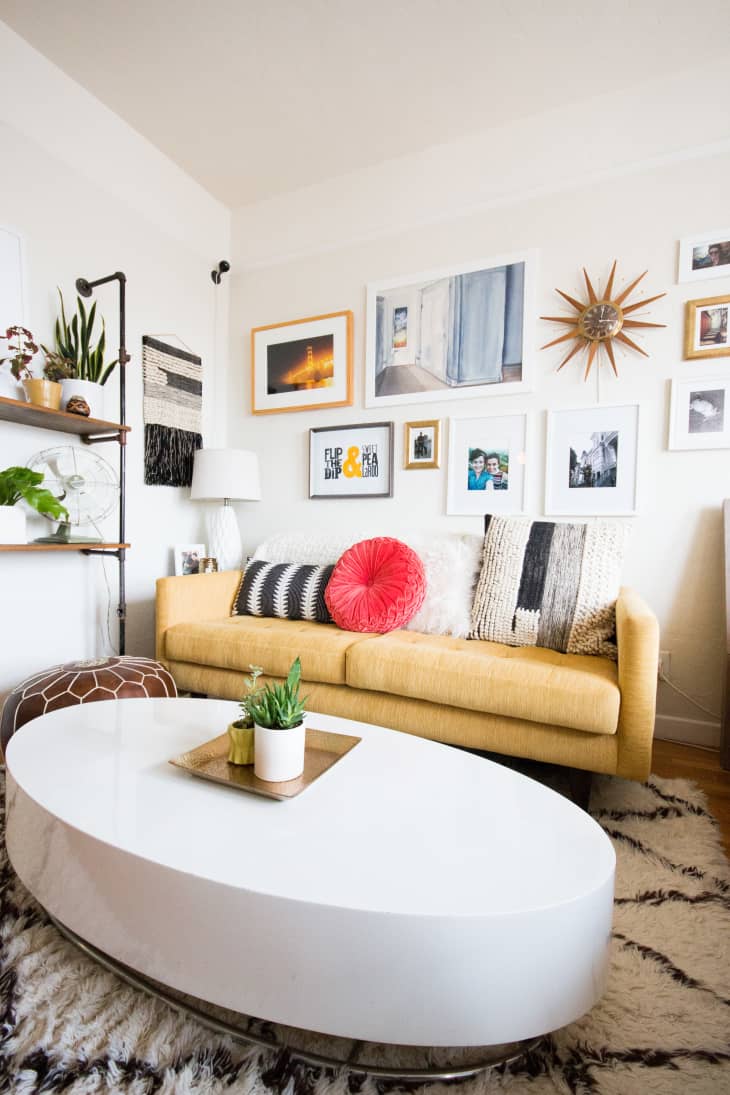How To Make a Studio Apartment Feel Bigger Than It Is

One of the biggest downsides to studio living is feeling like you live — and entertain — in your bedroom. But even though that might physically/technically be true, it doesn’t mean you can’t use design to make it feel like it’s more than just a studio.
These smart and stylish studios — all under 500 square feet — employ three of the most successful ways to make a studio apartment feel bigger than it is. And they’re design tips that anyone can use (whether you have more than one room or not!) to make any room feel better.
Choose double duty furniture
Alee’s studio apartment is successful thanks to the powers of double-duty furniture. In the morning, her bed transforms into what looks like a sofa by a simple rearrangement of throw pillows. Placing it with a long edge against a wall (like you would a sofa), helps the illusion. Arranging the rest of the home’s furniture around the bed/sofa makes her home feel more like a cozy living room instead of a bedroom, making it both a comfortable home for herself and for guests.
Arden employed the same smart double duty trick in her small studio apartment as Alee did. Her daybed plays the role of a couch during the day, and then becomes her bed at night. The extra storage it offers also allows her to keep her space minimal and clean, making it feel much larger than 400 square feet.
Creatively carve out zones
Creating different zones for living can help make a studio space feel less like one room. But a wall divider or a bookcase in the middle of a room isn’t the only way to visually divide. In fact, I believe doing it the way Adrianne did is the most successful: Using accessories, art and other small details to divide.
A rug establishes the living room area. A solid white coffee table gives a heavy presence to the living room corner and anchors the zone. A yellow sofa becomes a strong focal point. And the DIY wall shelves and art climb up the walls surrounding the living room furniture, completing the living room zone. Can you still see the bed? Yep. But it doesn’t feel like you’re living in a bedroom thanks to the visual strength of the other living zones.
Work with height
Sure, you can use height to your advantage when it comes to space maximization — wall hooks on open wall space can hold essential items, shelves above doorways can house things, too. But where Emily’s studio excels is the height of furniture and accessories; they create a space that doesn’t quite feel like a studio, even though there’s no sofa (and her bed looks like a bed).
By choosing bar-height seating for the dining area, she visually divides the kitchen from the rest of the apartment. By choosing a low wooden bench beside the bed, the bedroom area feels separated but doesn’t block light or clutter the space. Hanging plants and a big mirror above the fireplace draw the eye up. Flowers in front of the bed help make it feel like you’re not immediately stepping into a bedroom. Even tall candlesticks on the dining table create a visual divide.
Pair all of the above with a lot of color and texture, and you have a space that has a lot going on…and that doesn’t make the bed the center of the entire home (even though it physically is!).